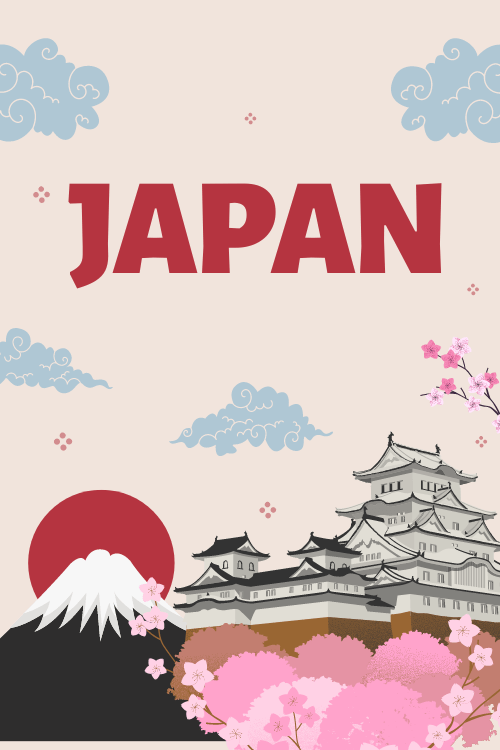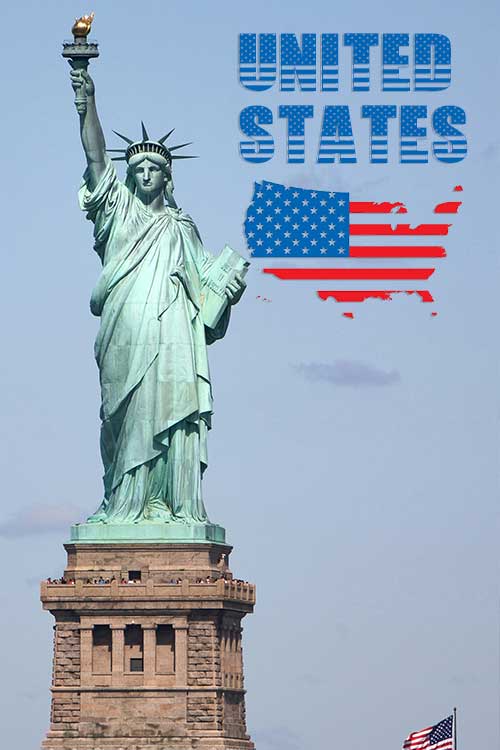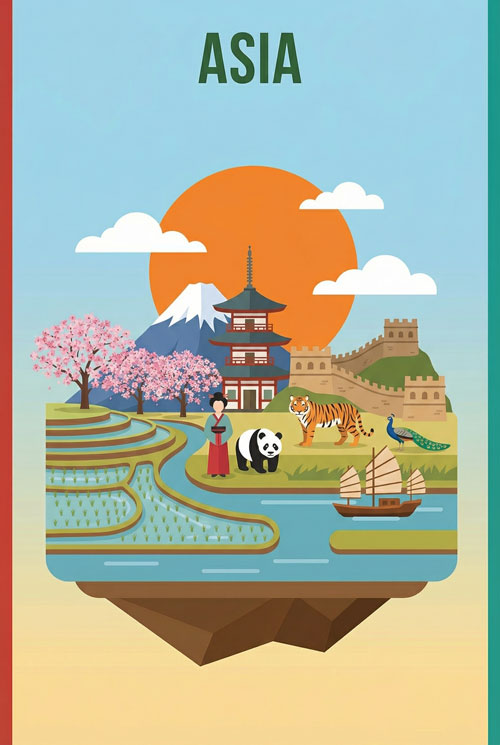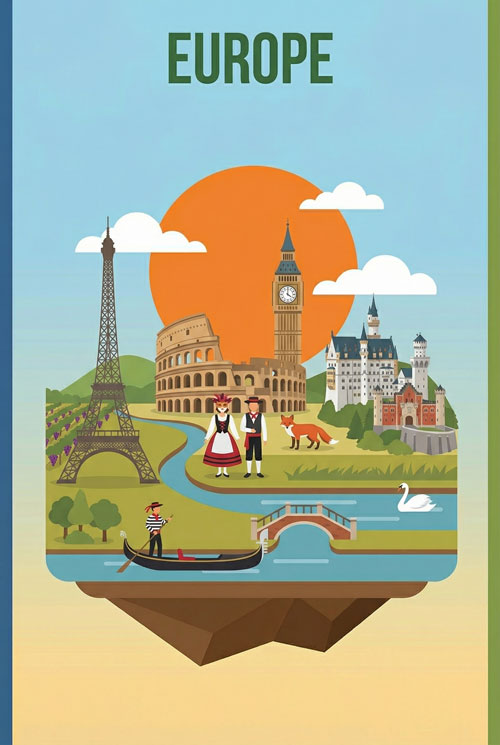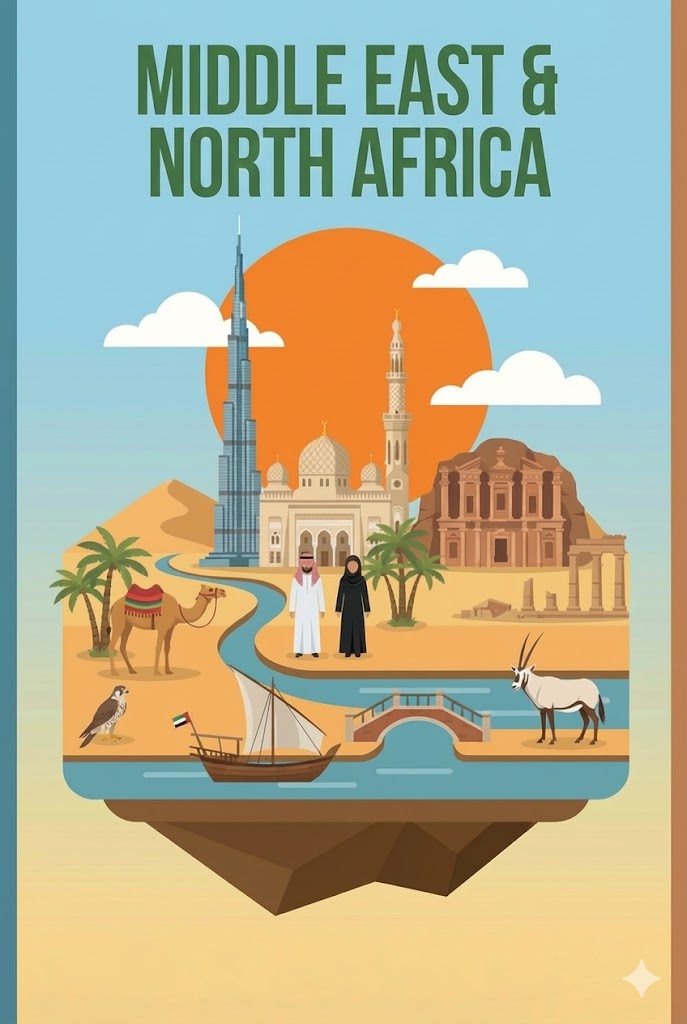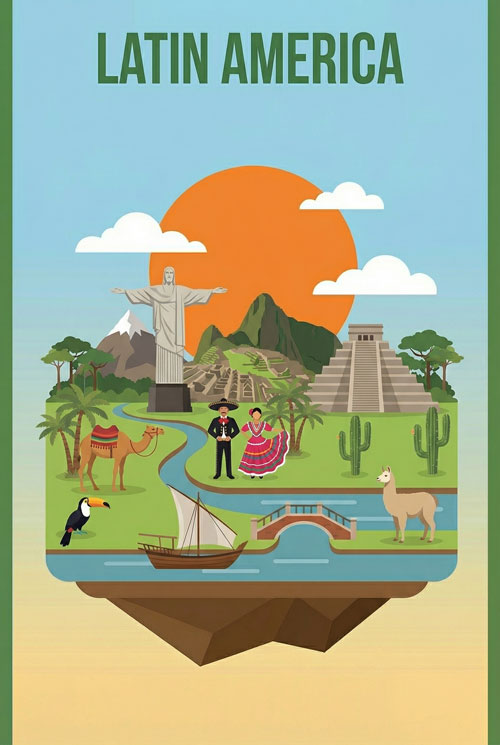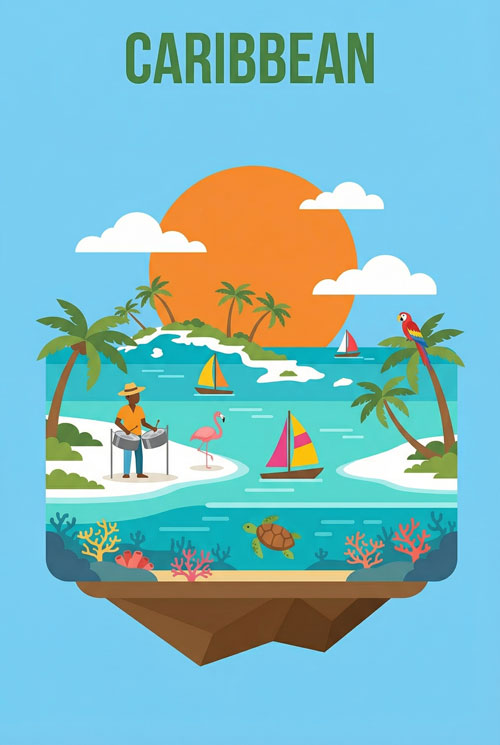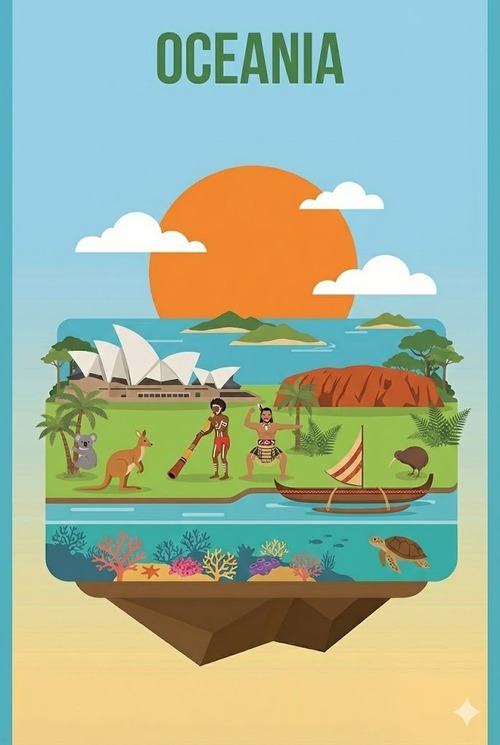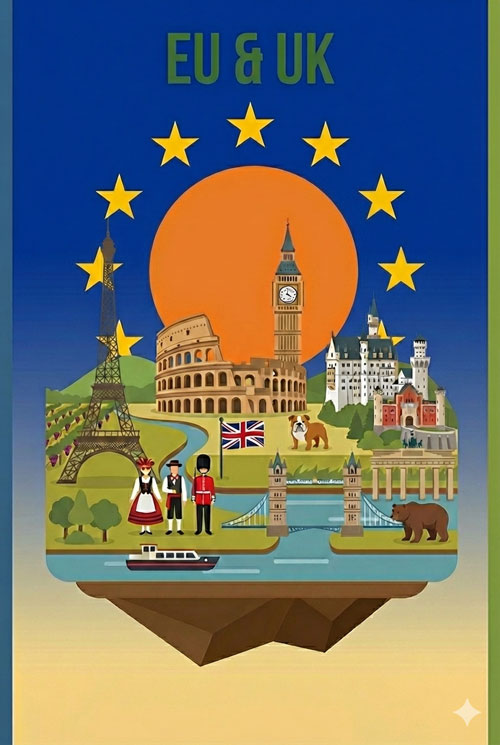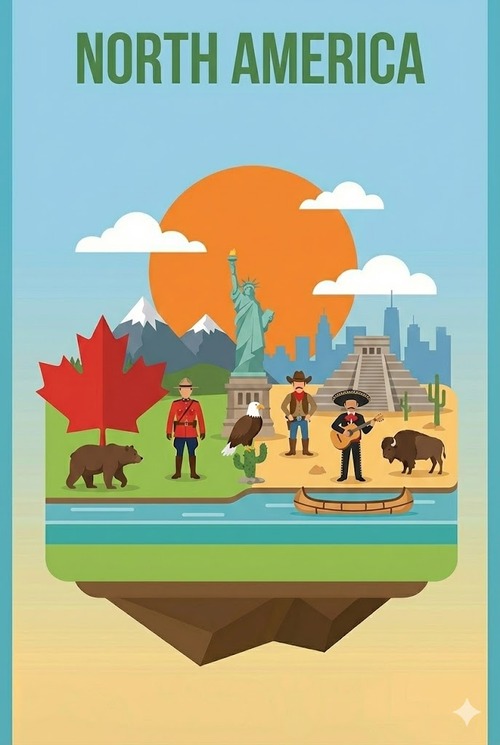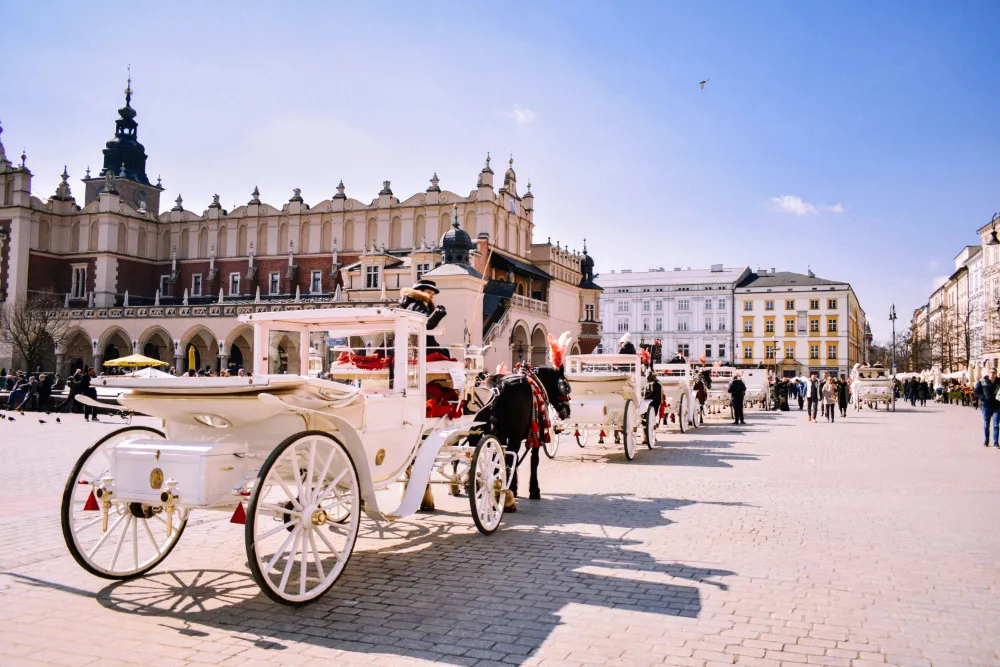Best Time To Visit
Best Time To Visit Poland: Full Guide + Quiz
Figuring out the best time to visit Poland can make your trip truly special.
Generally, late spring (May) and early autumn (September to early October) offer the most pleasant weather and fewer crowds.
Summer (June to August) is popular and lively, great for festivals, but also busier.
Winter (December to February) is cold and snowy, perfect for Christmas markets and skiing, though some attractions may have shorter hours.
Ultimately, Poland welcomes you year-round, with each season offering unique charms. Ready to find your perfect time? Let’s explore what Poland has in store for you.
Need a quick answer of the best time to visit Poland for your specific needs? Try our quick quiz!
Find Your Perfect Poland Trip!
Answer a few questions to discover the best time for your visit to this beautiful country.
1. What kind of atmosphere are you looking for in Poland?
2. How do you feel about crowds?
3. What’s your ideal weather for exploring Poland?
4. Which Polish experiences are high on your list?
Select up to 2 that are most important.
5. How important is budget in your planning?
Your Recommended Poland Trip Time:
Stay Connected in Poland with esim4.com!

Don’t let roaming charges spoil your Poland adventure. Get affordable and convenient eSIM data plans from esim4.com. Easy to set up, stay connected from the moment you land!
Explore Poland eSIM PlansPoland’s Climate: A Quick Look
Understanding Poland’s weather helps you pack right and plan well. It’s a country of four distinct seasons, each bringing its own beauty and challenges.
Experience Poland’s Four Distinct Seasons
Poland enjoys a temperate climate, meaning you’ll see clear changes from one season to the next. Spring (March to May) starts chilly but warms up nicely, with nature bursting into life. Summer (June to August) is generally warm, sometimes hot, with plenty of sunshine and occasional rain showers. This is when cities buzz with outdoor cafes and festivals.
Autumn (September to November) brings golden colors and milder temperatures, especially in the early part of the season. It’s often a beautiful time for sightseeing. Winter (December to February) is cold, with temperatures often dropping below freezing and bringing snow, especially inland and in the mountains.
This variety means there’s always something happening.
Know These Regional Climate Quirks
Poland’s weather isn’t the same everywhere. Its location means different air masses meet, making the weather quite changeable. The Baltic coast in the north can be breezy and a bit unpredictable, even in summer. Summers here are milder than in the south, which can be a relief if you’re escaping extreme heat elsewhere.
The mountainous regions in the south, like the Tatra Mountains, have their own climate rules. Here, altitude plays a big role. Winters are colder and snowier, and the ski season can be long. Even in late spring, higher trails might still have snow. The western part of Poland tends to be a bit milder than the east, which can feel colder continental air. Knowing these little differences can help you choose the best spots for your trip, no matter the season.
The Best Times to Visit Poland: A General Guide
While any time can be a good time, some periods might suit your travel style better. Let’s look at the main travel seasons.
Peak Season: Summer’s Buzz (June-August)
Summer is when Poland truly comes alive. Think warm days, long evenings, and a vibrant atmosphere everywhere. Average temperatures in cities like Warsaw and Krakow are pleasant, often in the low to mid-20s Celsius (70s Fahrenheit). It’s prime time for enjoying outdoor cafes, exploring city parks, and attending numerous festivals. The Baltic coast is popular with beachgoers, though the weather can be fickle.
This is also when you’ll find the biggest crowds, especially in popular tourist spots. Accommodation prices, particularly near the Baltic beaches, can be higher. However, many find the lively energy and wealth of activities worth it. If you love a bustling environment and warm weather, summer could be your ideal pick.
Shoulder Seasons: Spring & Autumn’s Charm (April-May & September-October)
Many travelers find the shoulder seasons – late spring and early autumn – to be the sweet spot for visiting Poland. April and May see the country awaken. Flowers bloom, trees turn green, and temperatures become comfortably mild, often in the teens to low 20s Celsius (60s Fahrenheit) by May. You’ll find fewer tourists than in summer, making for a more relaxed experience.
September and early October offer a similar appeal. The weather is often sunny and pleasant, with beautiful autumn colors, especially in parks and the countryside. Crowd levels drop after the summer rush, and you might find better deals on accommodation. These periods are fantastic for city sightseeing, hiking, and enjoying cultural events without the peak season intensity. This is often considered the best overall time to visit.
Off-Peak Season: Winter’s Magic (November-March)
If you don’t mind the cold, winter in Poland has a unique magic. From November, temperatures drop, and by December through February, expect cold days, often below freezing, and snowfall. Cities like Krakow and Warsaw transform with festive Christmas markets in December, offering a truly charming experience. This is also the main ski season in the Tatra Mountains.
The biggest advantages of visiting in winter are the significantly fewer tourists and potentially lower prices for flights and city accommodation. However, daylight hours are shorter, and some attractions might have reduced opening times. You’ll need to pack warm clothes! For a cozy, festive, or ski-focused trip, winter can be wonderful.
Poland Month-by-Month: Your Detailed Planner
To help you pinpoint the perfect time, here’s a closer look at what each month typically offers. Remember, weather can be unpredictable, so these are general guides!
January: Winter’s Heart
January is usually Poland’s coldest month. Expect average temperatures in Warsaw and Krakow to hover around freezing or below, often between -5°C to 1°C (23°F to 34°F). Snowfall is common, blanketing cities and countryside. Gdansk on the coast is slightly moderated by the sea but still cold, with averages around -1°C (30°F) and snow.
Pros: Fewer tourists, lower hotel prices in cities, beautiful snowy landscapes, great for skiing in the south. The Orthodox Christmas and New Year might be celebrated by some. Three Kings’ Day (Epiphany) on January 6th is a public holiday with processions.
Cons: Very cold, short daylight hours, some outdoor attractions may be limited.
Events: Warsaw Theatre Meetings might occur in January.
February: Cold Days, Warm Hearts
February continues the cold trend, similar to January, though perhaps with a slight hint that winter won’t last forever. Average temperatures remain low, typically -3°C to 3°C (27°F to 37°F) in major cities. Snow is still a regular feature.
Pros: Still low tourist season in cities, potential for good ski conditions. Fat Thursday (Tłusty Czwartek) often falls in February, a day for indulging in delicious Polish doughnuts (pączki) before Lent.
Cons: Persistently cold, limited outdoor activities unless you’re into winter sports.
Events: Our Lady of Candlemas (February 2nd) is a traditional observance.
March: Spring’s First Whisper
March is a transition month. Winter still has a grip, especially at the start, but signs of spring begin to appear. Average temperatures start to climb, ranging from around 0°C to 8°C (32°F to 46°F). You might see a mix of snow, rain, and even some early sunshine.
Pros: Crowd levels remain low. The ski season might still be ongoing in higher mountain areas. You might catch the end of winter sales.
Cons: Weather is very unpredictable – can be wintry or mildly spring-like.
Events: The Marzanna festival, where a straw effigy symbolizing winter is drowned or burned to welcome spring, happens around March 21st, especially popular with children. The Ludwig van Beethoven Easter Festival in Warsaw often starts in late March/early April.
April: Easter & Awakening
April usually brings a more definite spring feeling. Temperatures become milder, with averages typically between 4°C to 15°C (39°F to 59°F). Trees start to blossom, and parks turn green. Rainfall is common, but so are sunny days.
Pros: Pleasant temperatures for sightseeing, beautiful spring scenery. Easter (Wielkanoc) often falls in April and is a major celebration with unique traditions like painted eggs and blessed food baskets. Fewer crowds than summer.
Cons: April showers are a reality. Some public holidays around Easter (Easter Sunday and Monday are public holidays) mean some shops and services might be closed.
Events: Easter celebrations are nationwide. Wrocław’s Jazz on the Odra festival is a major draw. Warsaw Beer Festival might have its spring edition.
May: Blossoms & Sunshine
May is often considered one of the best months to visit Poland. The weather is generally lovely, with average temperatures ranging from 9°C to 20°C (48°F to 68°F). It’s usually sunny, and the countryside is in full bloom.
Pros: Beautiful weather, ideal for outdoor activities like hiking and city exploration. Cafe culture comes alive. Fewer crowds than peak summer.
Cons: Can still have some rainy days.
Events: Labour Day (May 1st) and Constitution Day (May 3rd) are public holidays, creating a long weekend called Majówka, a popular time for Poles to travel. The Krakow Film Festival (KFF) often takes place in late May/early June. Warsaw Book Fair is usually in mid-May. Open-air Chopin concerts in Warsaw’s Łazienki Park typically begin.
June: Summer Kick-off
June marks the start of summer and the high tourist season. The weather is warm, with average temperatures between 12°C to 23°C (54°F to 73°F). Days are long and generally sunny, though summer showers are possible.
Pros: Warm, pleasant weather. Lively atmosphere with many outdoor events and festivals. Ideal for visiting the Baltic coast or Masurian Lakes.
Cons: Crowds start to build, and prices may increase.
Events: Corpus Christi (Boże Ciało) is a public holiday, often in June, with colorful religious processions. The Great Dragon Parade in Krakow is a fun family event. Wianki (Midsummer/St. John’s Night) is celebrated with flower crowns and festivities around the summer solstice. Orange Warsaw Festival, a major music event, often happens in June. Co Jest Grane Music Festival in Warsaw. Street Art Festival (Sztuka Ulicy) in Warsaw at the turn of June/July.
July: Peak Summer Vibes
July is typically the warmest month in Poland, right in the middle of peak tourist season. Average temperatures are usually between 14°C to 25°C (57°F to 77°F), but heatwaves can push them higher. It’s a popular time for festivals and outdoor activities.
Pros: Warmest weather, long sunny days. Many cultural events and festivals. Perfect for beaches and lakes.
Cons: Can be hot and sometimes humid. This is the busiest month for tourism, so expect crowds and higher prices. July is also one of the wettest months in some areas.
Events: St. Dominic’s Fair (Jarmark św. Dominika) in Gdansk, a massive trade and cultural fair, usually starts in late July/early August and lasts for three weeks. Magicians’ Carnival in Lublin. International Sopot Festival. Poland’s Shakespeare Festival in Gdańsk. ULICA Street Theatre Festival in Krakow. Warsaw Summer Jazz Days.
August: Warm Days, Cool Evenings
August continues the summer warmth, with similar temperatures to July, averaging 13°C to 25°C (55°F to 77°F). Days are still long and mostly sunny, though evenings can start to get a little cooler towards the end of the month.
Pros: Still great weather for outdoor activities and festivals. The Baltic coast and Masurian Lakes remain popular.
Cons: Still peak tourist season with crowds and higher prices, though it might start to quiet down slightly towards month’s end.
Events: Assumption Day (August 15th) is a public holiday. St. Dominic’s Fair in Gdansk continues. Old Krakow Music Festival. Jagiellonian Fair in Lublin. Music Festival „Chopin and his Europe” in Warsaw. Harvest festivals (Dożynki) may begin in rural areas towards the end of the month.
September: Golden Autumn Begins
September often brings what’s known as “Polish Golden Autumn” (Polska Złota Jesień). The weather is frequently mild and sunny, with average temperatures from 9°C to 19°C (48°F to 66°F). The summer crowds disperse, making it a fantastic time for sightseeing.
Pros: Pleasant, mild weather. Beautiful autumn colors. Fewer tourists than summer. Good for hiking and city exploration.
Cons: Evenings can get chilly. The chance of rain increases later in the month.
Events: Cross-Culture Music Festival in Warsaw. Warsaw Contemporary Music Festival (“Warsaw Autumn”). The Dachshund March in Krakow is a quirky, fun event.
October: Crisp Air, Fewer Crowds
October sees a more noticeable shift to autumn. Temperatures cool down, averaging 5°C to 14°C (41°F to 57°F). Days are shorter, but you can still get beautiful crisp, sunny days, perfect for enjoying the fall foliage.
Pros: Significantly fewer crowds. Often good deals on accommodation. The autumn colors can be stunning.
Cons: Weather becomes more unpredictable, with colder days and more rain possible.
Events: Warsaw Film Festival (WFF). Warsaw Beer Festival (autumn edition). Dialog-Wroclaw International Theatre Festival. Grechuta Festival in Krakow.
November: The Quiet Before the Sparkle
November is generally a quiet month for tourism. It gets colder, with average temperatures between 1°C to 7°C (34°F to 45°F). Expect grey, overcast days, fog, and the first hints of winter, possibly even some early snow, especially towards the end of the month.
Pros: Very few tourists. Lowest prices for accommodation in cities. A good time for indoor activities like museums.
Cons: Often cold, damp, and grey. Short daylight hours.
Events: All Saints’ Day (November 1st) is a major public holiday where Poles visit cemeteries, creating a beautiful sight with thousands of candles. Independence Day (November 11th) is another important national holiday with parades and ceremonies.
December: Festive Cheer
December brings the full onset of winter and the magic of the Christmas season. Average temperatures are typically between -2°C to 3°C (28°F to 37°F). Snowfall is common, creating a festive atmosphere.
Pros: Beautiful Christmas markets in major cities like Krakow, Warsaw, and Gdansk. Cozy atmosphere. Start of the ski season in the mountains.
Cons: Cold and snowy. Short daylight hours. Can be busy in popular Christmas market cities. Christmas Eve, Christmas Day, and the Second Day of Christmas (December 24-26th) are public holidays with many places closed.
Events: Christmas Markets (Jarmark Bożonarodzeniowy) are the main attraction. St. Nicholas Day (Mikołajki) on December 6th is when children often receive small gifts.
Find Your Perfect Trip: Poland for Every Interest
Poland offers something for everyone. Your ideal travel time might change based on what you love to do.
Enjoy City Breaks in Warsaw, Krakow & Gdansk
For exploring Poland’s vibrant cities, late spring (May-June) and early autumn (September-October) are often best. The weather is usually mild and pleasant for walking around. You’ll find fewer crowds than in peak summer. This means more space at popular sites like Krakow’s Main Market Square or Warsaw’s Old Town. Gdansk, with its coastal charm, is also lovely during these times. Summer (July-August) is lively with outdoor cafes and events, but can be crowded. Winter offers magical Christmas markets in December, but be ready for cold weather and shorter days for sightseeing.
Seek Outdoor Adventures: Hiking, Beaches, Lakes
If you love the outdoors, timing is key.
For hiking in places like the Tatra Mountains, late spring after the snowmelt (June) through early autumn (September-October) is ideal. Summer offers long days, but trails can be busy. Autumn brings stunning foliage. Always check conditions, as snow can linger late in spring and arrive early in autumn at higher altitudes.
The Baltic Sea beaches are best enjoyed from June to August when the weather is warmest and the sea is most inviting. July and August are peak times.
The Masurian Lake District, perfect for sailing and kayaking, shines from May to early September. July and August offer the best chance for good weather.
Immerse Yourself in Cultural Experiences & Festivals
Poland has a rich calendar of cultural events. Summer (June-August) is packed with festivals. You’ll find major music festivals like Open’er (Gdynia, near Gdansk) and Orange Warsaw Festival. Gdansk hosts the huge St. Dominic’s Fair from late July. Krakow has the Jewish Culture Festival and many others. Warsaw offers Summer Jazz Days and open-air Chopin concerts. Easter (March/April) is a deeply traditional period with unique customs. December is all about enchanting Christmas markets. Check specific festival dates when planning, as they can vary.
Hit the Slopes: Skiing Season
For skiing, head to the Tatra Mountains (e.g., Zakopane) or other southern ranges. The main ski season typically runs from December to March. January and February usually offer the best snow conditions. Accommodation in ski resorts can be pricier during this peak winter sports period.
Travel Smart: Visiting Poland on a Budget
If you want to save money, consider traveling during the off-peak or shoulder seasons. This generally means November to March (excluding Christmas holidays in cities) and late March-April or October. Flights from the US are often cheapest in February. Hotel prices in major cities like Warsaw, Krakow, and Gdansk tend to be lower during these quieter months. You’ll avoid the summer crowds too.
Peaceful Explorations: Avoiding the Crowds
To dodge the biggest crowds, plan your visit during the shoulder seasons: April-May and September-October. You’ll enjoy pleasant weather and popular attractions without the long lines of summer. Winter (outside of Christmas market hotspots and ski resorts) is also very quiet. Even during summer, Poland generally sees fewer tourists than Western European hotspots, but popular cities will still be busy.
Smart Travel: Practical Tips Tied to Seasons
A little planning goes a long way for a smooth trip.
What to Pack for Your Polish Adventure
Packing depends heavily on the season.
Spring (April-May): Layers are your friend. Pack light to medium sweaters, long-sleeved tops, comfortable trousers, and a waterproof jacket or umbrella for showers. Comfortable walking shoes are a must.
Summer (June-August): Light, loose-fitting clothes (cotton, linen) like t-shirts, shorts, and skirts are good. Don’t forget sunglasses, a hat, and sunscreen. A light jacket or sweater for cooler evenings and a rain jacket for occasional storms are also wise. If heading to the mountains or forests, insect repellent is useful.
Autumn (September-October): Similar to spring, pack layers. Medium-weight sweaters, long-sleeved tops, a warm jacket, and a raincoat or umbrella. Comfortable walking shoes are essential.
Winter (November-March): Warmth is crucial. Pack a heavy, waterproof winter coat, thermal underwear, warm sweaters (wool or fleece), thick socks, waterproof boots with good grip, a hat, gloves, and a scarf. Layering is key to staying comfortable both indoors and outdoors.
For any season, comfortable walking shoes are non-negotiable as you’ll likely be doing a lot of exploring on foot. If you plan on visiting churches or more formal venues, slightly smarter attire might be appreciated.
Getting Around: Smooth Seasonal Transport
Poland has a good public transport system, with trains and buses connecting cities and towns. These are generally reliable year-round.
In winter, heavy snowfall or severe frost can sometimes cause delays to buses and trains, particularly in more rural areas or if there’s a sudden, intense weather event. Road conditions can be challenging. If you’re driving in winter, be prepared. While winter tires aren’t always mandatory by a fixed date (it can depend on conditions or specific signage), they are highly recommended for safety. Always check local regulations before driving. Main roads are usually cleared, but smaller ones might take longer.
In summer, transport runs smoothly, but popular routes can be busier. Booking intercity trains or buses in advance is a good idea, especially during peak holiday periods.
Saving Money: Seasonal Costs for Flights & Stays
Your travel budget can be affected by when you visit.
Flights: Generally, flights to Poland are most expensive during the peak summer months (June, July, August) and around major holidays like Christmas. The cheapest month to fly from the US is often February. Booking a couple of months in advance can help you find better deals.
Accommodation: Hotel prices in popular tourist cities like Warsaw, Krakow, and Gdansk are highest during the summer peak season (June-August) and sometimes around Christmas/New Year in city centers. You’ll typically find lower rates during the off-peak winter months (January-March, November) and the shoulder seasons (April-May, October). For example, Gdansk hotels are often cheapest in March or February, while Warsaw’s can be cheaper in January or December (excluding festive peaks). Krakow might see lower hotel prices in February. Booking mid-week rather than weekends can sometimes also save you money.
Your Perfect Polish Trip Awaits
Poland is a country of amazing diversity, from historic cities to beautiful nature. Choosing the best time to visit really depends on what you want to see and do.
For the best balance of good weather and fewer crowds, aim for late spring (May) or early autumn (September to early October). You’ll find pleasant temperatures perfect for exploring.
If you love a lively atmosphere and warm summer days, and don’t mind sharing with more visitors, June to August is your time. You’ll catch many festivals then.
For a magical winter wonderland experience with Christmas markets or a ski adventure, December to February offers a unique charm, as long as you pack warmly.
And if budget is your main concern, the shoulder and off-peak seasons provide great value.
No matter when you decide to go, Poland is ready to welcome you with its rich history, vibrant culture, and friendly people. Enjoy your planning!
